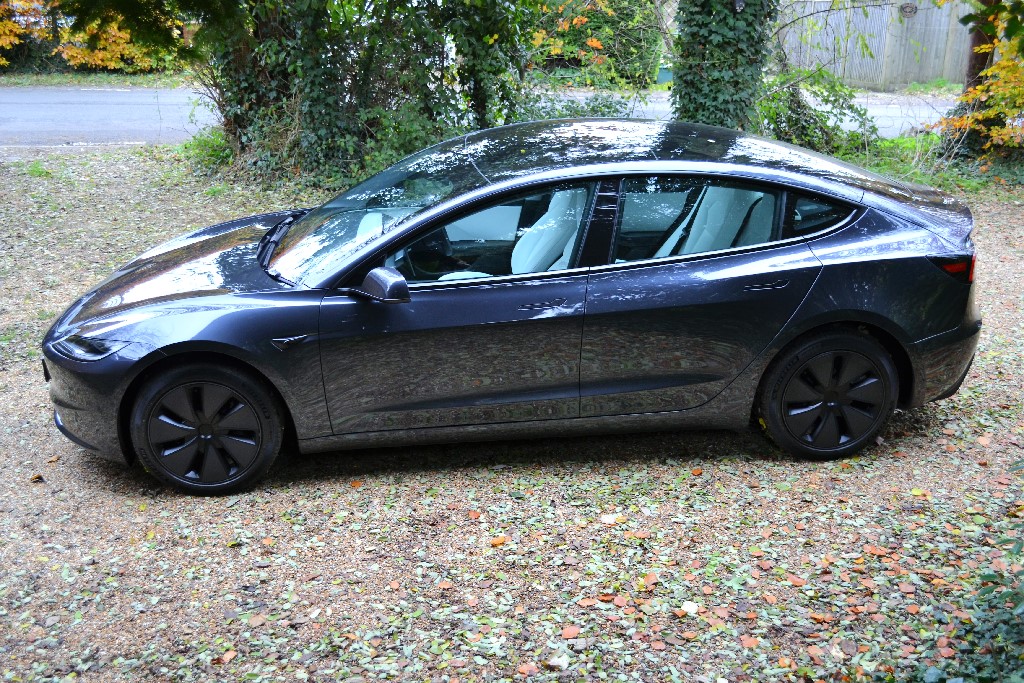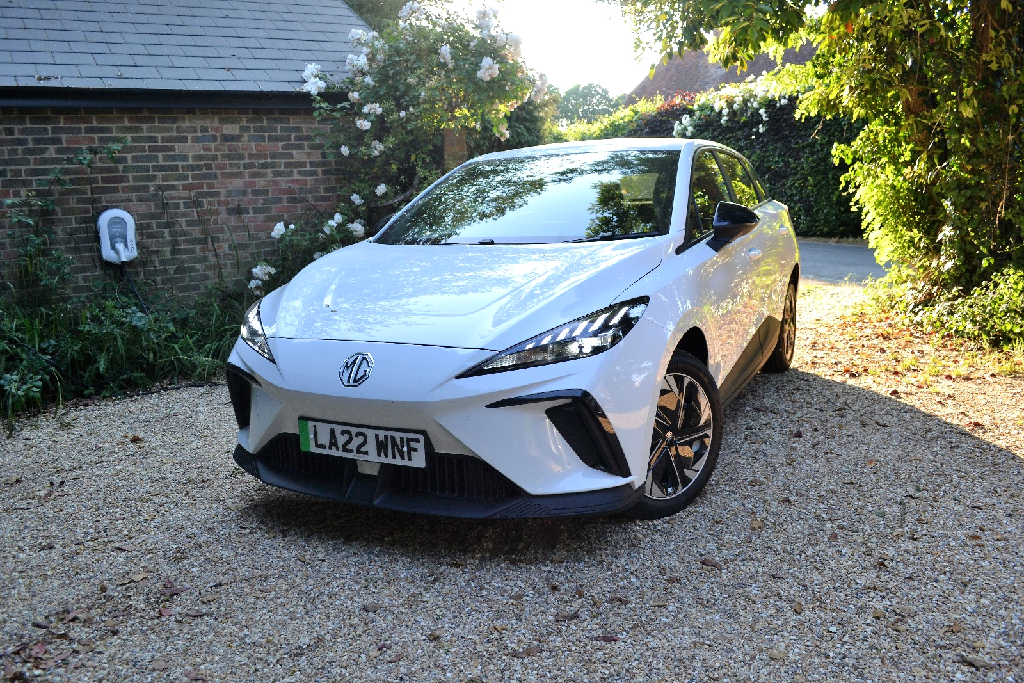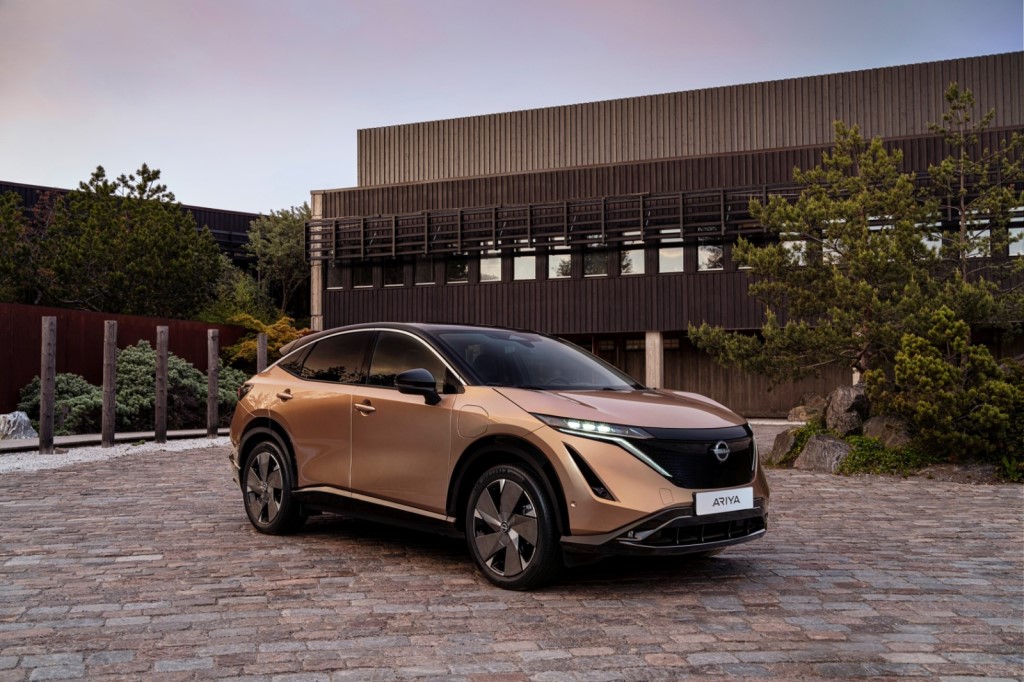Feature 11 min read
Tokyo Motor Show: A vision of a future electric
One of Japan's biggest and highest profile automotive events, the biennial Tokyo Motor Show is always an exciting one to cover. Japanese manufacturers always take the opportunity to showcase their new cars, alongside weird and wonderful creations that could only have come out of the world's second largest car manufacturing nation.
As with the Frankfurt Motor Show, the big theme running through the show is electrification. However, the show wasn’t just limited to new BEVs – Toyota's stand had a variety of mobility solutions, there were fuel cell vehicles and production-ready hybrids that will be on the roads within the next six months. So let's take a look at what Tokyo had to offer by brand.
Honda
All-new Jazz
The big news here is that the all-new Jazz will come in hybrid form as standard. It will also become its first model to feature Honda's “e:Technology” branding – pertaining to all future electrified models – and the first of Honda’s European cohort to get the “e:HEV” powertrain badge.
Honda has thoroughly reworked the popular B-segment car not only in terms of powertrain and technology, but also interior and exterior styling, space, comfort and safety. There’s even a crossover-style variant, which may broaden its appeal to as-yet uncharted demographics: younger drivers. Simple, minimalist design is the name of the game, with the Jazz getting a light and airy feel thanks to clever packaging of its hybrid powertrain. All of the latest connectivity through on-board WiFi, Apple CarPlay and Android Auto comes with it, alongside best-in-class Honda Sensing active safety tech. It will be on sale mid-2020.
Honda's electric strategy
Carrying the e:Technology and e:HEV branding for the first time, the 2020 Jazz heralds a new electrification push for Honda. Its goal is to have all of its mainstream models available in Europe to have an electrified powertrain option by 2022 – three years ahead of its previous target. These cars will all fall under the e:Technology umbrella and wear the e:HEV badge where appropriate, with six such models hitting Europe's roads in the next three years.
The as-seen-in-Frankfurt Honda e was on display, but the news announced at the show is that for customers across five major markets in Europe – including the UK – a deal with Vattenfall will see a flexible, EV-focussed energy tariff made available. Vattenfall will also oversee customer charging points, helping to make buying into the Honda EV ecosystem more joined-up.
Toyota and Lexus
Second generation Toyota Mirai
Toyota has been a staunch supporter of hydrogen fuel cells as one of the answers to the problem of sustainable future mobility, and its Mirai has been a leader in the FCEV field since 2014. Scheduled for release in Japan, Europe and North America next year, the second generation car has new styling giving it a really rather attractive, low-slung stance. It also looks like a car, rather than something ultra-futuristic, which will no doubt find favour with a lot of people.
Under the skin the fuel cell powertrain has benefitted from incremental improvements in terms of efficiency, enabling the second generation Mirai to travel around 30 per cent further on a tank of hydrogen than the original car. Inside, a new wrap-around instrument panel envelopes the driver in the cockpit area, whilst a 12.3 inch touchscreen and latest-gen connectivity and infotainment comes as standard.
2020 Toyota Yaris
Like the Jazz, the Toyota Yaris will come with a next-gen hybrid powertrain in the shape of the TNGA three-cylinder, fourth-generation system. It is also the first model to be based on Toyota's all-new GA-B platform. That powertrain utilises a 1.5-litre engine and combined, 15 per cent more power and a more than 20 per cent increase in fuel efficiency. Inside and out, the Yaris has been redesigned – including the obligatory connectivity, head-up display and array of TFT and touchscreen displays. It has also been designed to be the safest compact car in the world. Given the car’s production readiness, it’s likely that it’ll be available early-to-mid next year.
Toyota LQ Concept
A development of the Toyota Concept-i which we mentioned in our run-down of the vehicles being used at the Tokyo Olympics next year, the LQ has some minor visual tweaks. However, it’s in the tech that the LQ strides ahead of the Concept-i, with Level 4 autonomous driving function and ‘Yui’ – your friendly, on-board artificial intelligence personal assistant. A major goal with the LQ is to effectively learn a driver in order to personalise their experience and interactions with the car, making it more like a friend than a mode of transport. And with a driving range of around 200 miles, Yui should have plenty of time to get familiar.
Toyota personal mobility
Toyota's stand has been called the Mobility Theme Park, with a collection of electric, personal mobility solutions on display. Many of these will get a global audience next year at the Tokyo Olympics, including everything from autonomous people movers to small, final mile electric scooters. Somewhere between personal e-mobility and actual cars is a curious, production-ready, ultra-compact BEV. With a range of 62 miles and top speed of 37mph, it is designed for short, most likely urban, zero-emissions journeys.
Toyota e-Racer concept
A quick mention should be made of Toyota’s e-Racer – a two-seat concept that has been designed to demonstrate that autonomous vehicles can still be fun and engaging. The basic premise is that even in the coming age of autonomy, there is still room for fun, though one wonders whether what would essentially be a souped-up fairground ride will ever be able to replace hands-on driving. Beyond the name and static show car, that’s all we can tell you for now!
Lexus LF-30 concept
Lexus has presented its idea of what a future electric car from its stable would look like. Bigger than we had anticipated at over five metres long, but still a two-door (albeit they're massive, gullwing affairs) the LF-30 holds onto some of the front end styling that we're used to, but from there back it's curvy and futuristic. Inside, like many EV concepts, the driver area is based around a cockpit concept with gesture controls and augmented reality making the displays come to life. The front passenger seat continues the aeroplane vibe, with a layout like that of a first class seat.
In-wheel motors serve up a total of 536bhp and 516lb-ft of torque, enabling the car to hit 62mph in 3.8 seconds and achieve 124mph. Thanks to a 110kW battery, the LF-30 has a theoretical range of 310 miles, and would charge at 150kW. And all of these figures are quite achievable even with current technology. Quite whether they'll be utilised in a shape as out there as the LF-30 concept remains to be seen.
Nissan
Ariya concept
Nissan's Ariya concept is a crossover EV which brings with it the brand's new design language, characterised by the concepts ‘sleek’, ‘seamless’ and ‘sexy’. The car itself looks near production ready, hinting that we may see it come available in the next 12 to 18 months. We don't have specifics of the drivetrain, other than it's a twin motor, four-wheel drive setup which uses CHAdeMO charging connection for fast juicing of the battery.
Much of the gadgetry mentioned in the press release are features that are available in some form already, such as ProPILOT driver assistance, and an interior that doesn't feature a steering wheel made of unobtanium, rather an ultra-modern, but utterly functional layout of touchscreens and touch surfaces with the only physical controls being the on/off button and central control knob. Design wise, the Ariya has a high waistline and low roofline, making it squat yet aggressive in shape. It'll be interesting to see how that design direction applies to other Nissan models in future.
IMK
Alongside the Ariya, the IMK demonstrates new intelligent mobility technology from Nissan. Small, boxy and upright, it's a kei car (the Japanese vehicle category for the smallest passenger cars) to all intents and purposes, with an electric powertrain making it perfect for urban mobility. We reckon that it'll fly in Japan, where kei cars are extremely popular, and could well be viable in wider markets where urban air quality controls are being tightened up.
LEAF e+
With getting on for half-a-million LEAFs sold since the car’s debut in 2010, it is a significant vehicle in terms of normalising EVs to a global audience. At the Tokyo Motor Show, Nissan is showing off the latest iteration – the LEAF e+ - which has a higher density battery offering 40 per cent more range, totalling 285 miles, and a more power to boot. We've already driven the LEAF e+, so click here for our review.
Mazda
MX-30
Mazda has been vocally stubborn about its desire, or lack thereof, to adopt electric powertrains. Whilst Mazda acknowledges that EVs will need to be part of its multi-solution approach to future powertrains, even in the official comms regarding its first ever EV, the MX-30, the brand couldn’t help but throw in a mention of its (admittedly very impressive) Skyactiv-X engine. But Mazda knows it can’t hold back tide forever, and this is where the MX-30 small SUV with an e-Skyactiv powertrain comes it.
It is a very reserved first foray into the world of EVs when it comes to the electronics. The car gets a mere 35.5kWh battery which makes it good for 125 miles. Mazda justifies this by pointing out that most car journeys in Europe are 30 miles or less, but we can imagine that range being very off-putting to potential customers. But potential negatives aside, the car’s ‘less is more’ Kodo design is very attractive and appreciably Mazda, and that ‘MX’ nomenclature was purposely chosen to hark back to the late 80s when the now uber-successful MX-5 was widely dismissed by the industry of the time.
Driving pleasure is at the front and centre of Mazda’s mission, with them commenting, “many of the media who have driven our test vehicle have said it is one of the few electric cars they have driven with the positive characteristics of a regular car.” The MX-30 is destined to hit the roads in the UK in early 2021.
Mitsubishi
MI-TECH Concept
We reported on the Mitsubishi concept small SUV that would be revealed at the Tokyo Motor Show and now we have full sight of it. Called the MI-TECH, the car has been designed to embody the statement “Drive your ambition”, under the concept of ‘Stimulates the driver’s adventure’. Small, compact, lightweight, robust, chunky in proportions and futuristic, the MI-TECH is powered by a PHEV system including a four-motor 4WD system.
But it’s not a ‘normal’ PHEV system; instead of a standard petrol engine, Mitsubishi has adopted a gas turbine which has the benefit of being light and powerful for its size, and also with the capability to run on a variety of fuels such as diesel, kerosene, alcohol and biofuel. There is no physical link between the turbine and the wheels, with the electric motors providing all of the motivation, whilst M-PILOT driver assistance helps the car deal with the rough stuff. The chances of the MI-TECH making production in anything like its current form are slim-to-none, but it is undoubtedly cool.
Suzuki
Waku SPO Concept
Suzuki’s Waku SPO concept is an interesting proposition that answers questions nobody was asking. A small, A-segment car with a PHEV powertrain (specific details unknown), it’s reminiscent of the Honda e in the styling department, blending cutesy and retro to somehow look modern and cool. The car’s stand-out feature, however, is its ability to change body shape at the touch of a button.
At the rear, a movable section of roof – which bears a striking resemblance to the back of a eighties Chrysler New Yorker – can turn the car from an estate into a coupe. This is done by using the ‘Waku Waku’ switch, with ‘Waku waku’ being a Japanese term for ‘excitement’. As well as changing the body shape, the car’s character changes in terms of what’s displayed on the dashboard. Whilst the car is very much a concept, elements of it might see production in the future.
Ten public days to go
With the press days now over, the public will be able to enjoy the spectacle of one of the world’s foremost motoring events until November 4. Alongside all of the vehicles mentioned above, some of the big names and reveals from previous shows this year will be on display, with the likes of Mercedes, Renault and Alpine showing off their latest conventionally powered and EV models. However, there are notable absences, with BMW, Audi, VW, Volvo and Ford – all of which have recently-revealed high-profile models – not attending.
Whilst there is a void where European manufacturers would once have been, this does at least allow us to concentrate on the unique way in which Japanese manufacturers are approaching the future of cars, and wider e-mobility.























































Comments (0)
Be the first to write a comment
Login/ Signup